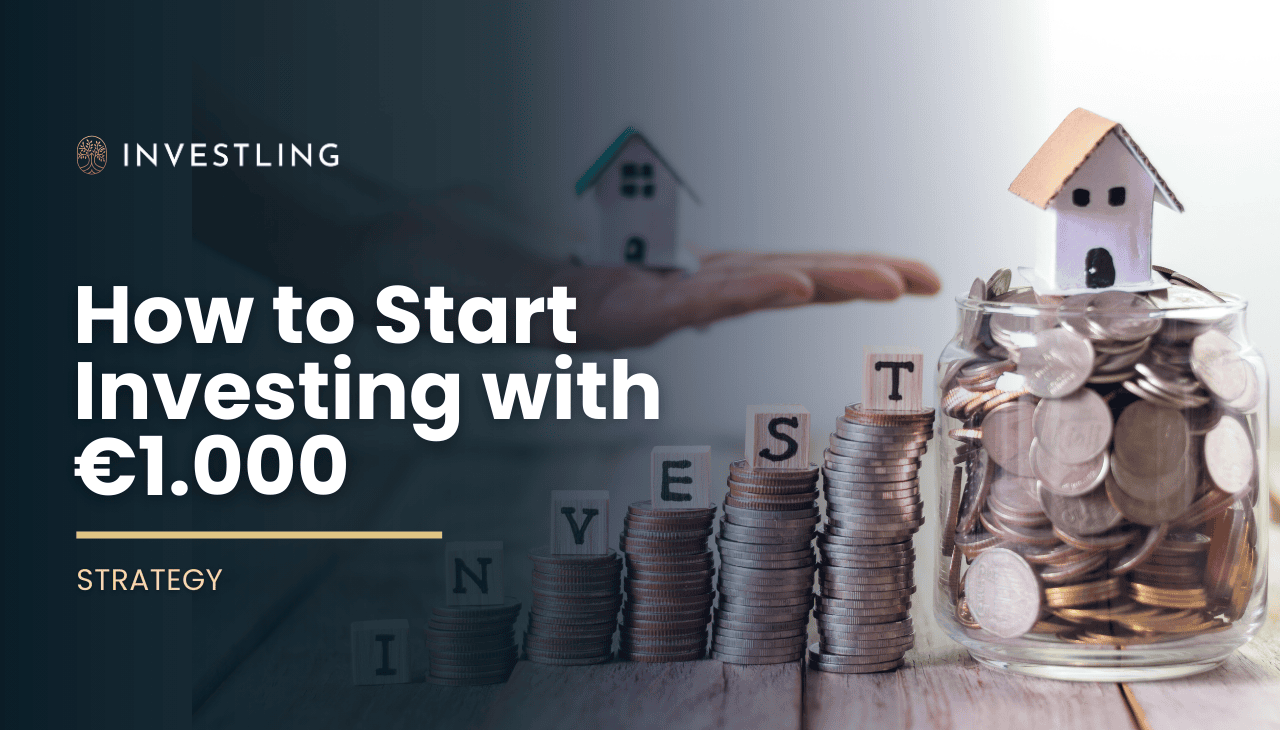Investing is accessible for everyone since about 25 years. Yet, most of us haven’t taken a step yet to invest their first €1,000.

We'll guide you through how to do it:
1. Know Your Goals and Risk Level
Without this, you’ll be sailing blindly and you’ll most likely end up losing money and condemn capitalism and financial markets.
Obviously, also in the finance world, there is an information overflow. People talk everywhere about Bitcoin, the next quick gain, and why we missed out on the Nvidia bull run.
Do your homework by:
- a. Defining Smart goals: I want to save €60k for a downpayment on an apartment in 10 years.
- b. Risk Level: I am fine to temporarily lose 20-30% on an investment to reach gains of >10% per year.
2. Open an Investment Account
You might be able to invest through your existing bank account like Revolut.
In Europe, good options are:
- Scalable Capital (Germany-based, easy for EU users).
- Trade Republic (simple app, low fees).
In the US: Robinhood
My favorite: Interactive Brokers.
Make a transfer of your first €1,000 to have it available in your app/account.
3. Invest in Low-Cost ETFs
To dip your toes in the investment world, start with passive investing. It means that you choose a broad selection of different investments and with that, spread your risk.
ETF means Exchange-Traded Fund. It is like a basket of many stocks or bonds. One ETF can hold shares from 100 companies or more. This spreads your risk – if one company does bad, others may do good.
You can choose an ETF like the S&P 500, which tracks the 500 biggest US American companies.
Check this website to choose an ETF that fits your return goals: justetf.com
Why ETFs?
- Low cost: Fees are small, like 0.2% a year.
- Easy: You buy like a stock.
- Diversification: Covers many asset classes (from Week 2 in our course: stocks, bonds, real estate, commodities).
Examples for beginners:
- A global stock ETF like Vanguard FTSE All-World (covers world companies).
- A bond ETF for safety, like iShares Euro Government Bond.
With €1000, buy one or two ETFs. For example:
- €700 in a stock ETF for growth.
- €300 in a bond ETF for safety.
4. Add €50 Every Month to Grow
Do not stop at €1000. Add small amounts regularly. We suggest €50 a month. This is called dollar-cost averaging.
Why?
- You buy when prices are high or low, so average cost is good.
- It builds habit.
- Over time, your portfolio grows big.
Example: Start with €1000. Add €50/month. If it grows 5% a year (average for moderate risk), in 10 years it could be over €8000. (This is an example; real growth can vary.)
Use bank auto-transfer to your investment account. In Europe, watch for taxes – some countries have tax-free accounts like Depot in Germany.
Common Mistakes to Avoid
- Do not chase hot trends. Stick to your plan.
- Check your investments once a quarter, not every day.
- Rebalance yearly: Sell some winners, buy losers to keep balance (Week 9).
- Learn about taxes: Use tax-efficient ETFs to save money (Week 8).
If markets drop, stay calm. Investing is for long term.
Why Learn More?
Starting with €1000 is great, but to grow confident, join our free Investment Basics course at learn.investling.org
It has:
- 30 short videos per week (2-3 minutes each).
- Quizzes and assignments to define your personal investment strategy.
- AI mentor for questions and investment deep dive.
We cover everything: Asset classes, risk management, performance tracking. DM me for details.
Remember, investing has risks. Past growth does not promise future. Talk to an advisor if needed, as this is just an example.
NO Financial Advice – Just Financial Education. Start small, learn, and watch your money work for you!

